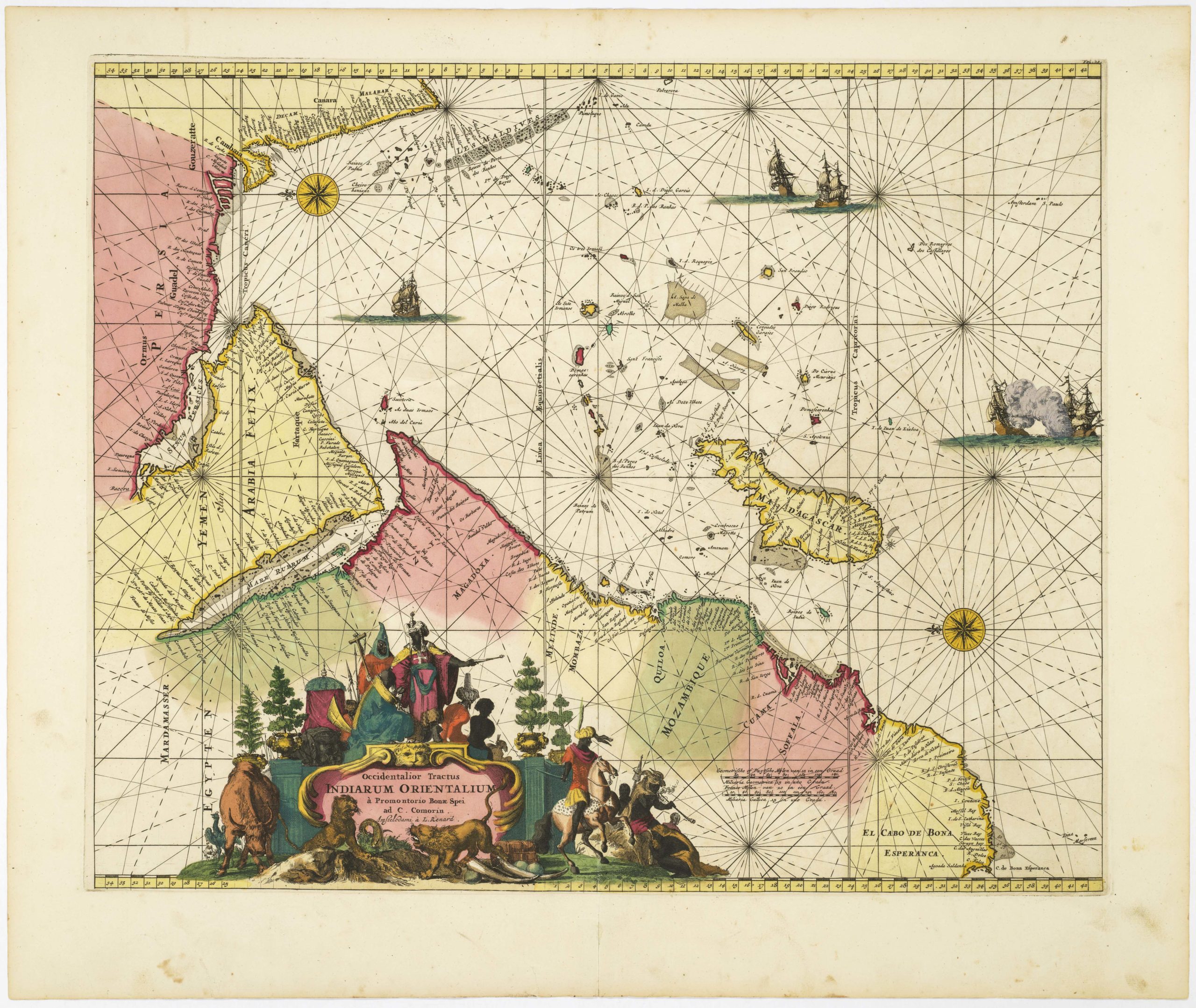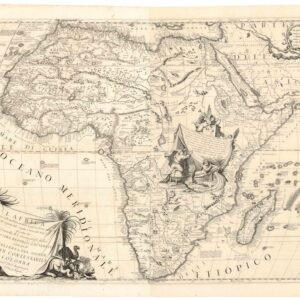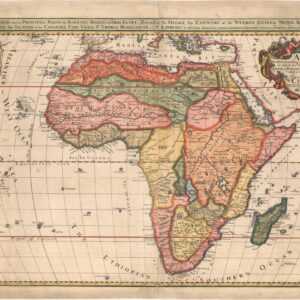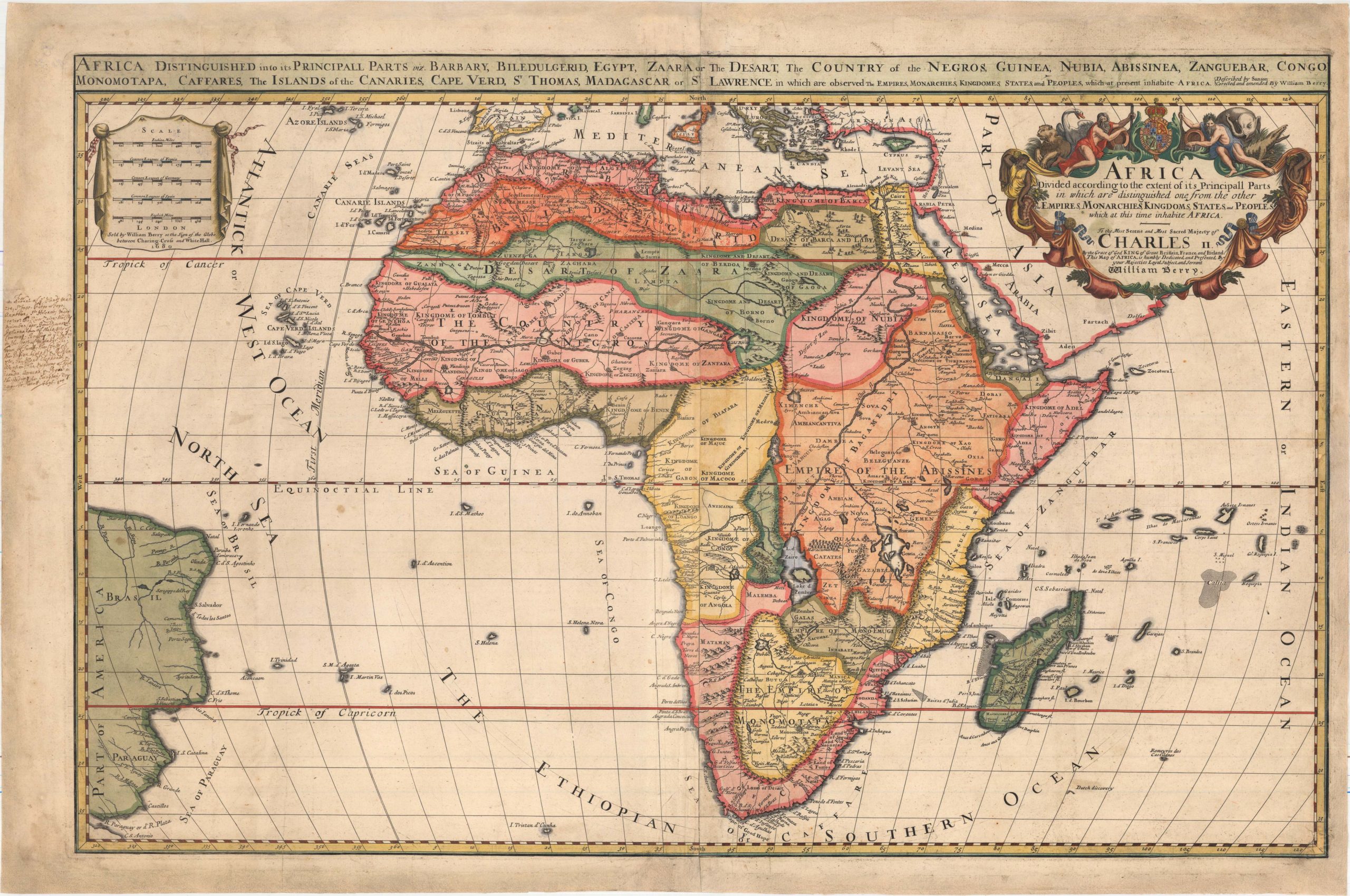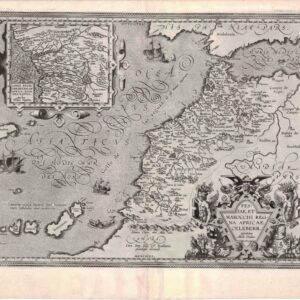Ortelius’s gorgeous cornerstone map of Africa.
Africae Tabula Nova
Out of stock
Description
In his authoritative cartobiliography of Renaissance and Early Modern maps of Africa, Betz refers to this map as one of the cornerstone maps of Africa, alluding to the great influence this map had in how Europeans imagined the shape and characteristics of the African continent until well into the seventeenth century.
Ortelius designed the map using elements of three famous contemporary maps: Gastaldi’s 1564 wall map, Mercator’s 1569 wall map, and likely the 1562 map of Africa by Forlani. He also made use of several written sources, including Ramusio in Navigationi et Viaggi (1550), Joao de Barros in Decadas da Asia (1552), and Leo Africanus in Historiale description de l’Afrique (1556).
Of these sources, Ortelius followed most closely Gastaldi, whose 1564 map is the most influential map of Africa of the 16th century. He did, however, introduce several significant changes, making the Cape of Good Hope more pointed, appreciably reducing the eastward extent of the continent (by about 1,700 km, to 7,000 km), and contracting the distance from Ceuta to Cairo (by about 1,600 km, to 3,500 km). As Betz notes, these distances are quite close to the actual measurements today: 6,800 km for east-west axis and 3,450 km from Ceuta to Cairo.
For the source of the Nile, Ortelius follows the common two-lake Ptolemaic conception with one important exception: an omission of the Mountains of the Moon, which on many maps are depicted as source for the lakes. Here again he seems to be following Gastaldi, who does not explicitly name the mountains.
Most of the nomenclature is taken from Gastaldi. An interesting example of the use of placenames is the term Zanzibar. Ortelius uses a general Zanzibar in southwest Africa to, presumably refer to the people and area of East and Southern Africa, and Zenzibar for the island off the coast.
The map is decorated with a classical strapwork title cartouche, with two statues of women and four lions’ heads. Additional decorative elements include a grand sea battle (copied from Diego Gutierez’ wall map of the Americas) and sea monsters, including a ghost monster barely visible in the sea off the Arabian peninsula.
This is the second state with BI=LE=DUL=GERID (an historical region south of the Atlas Mountains) added above and below the Tropic of Cancer.
Latin text on verso. Engraved by Frans Hogenberg.
Cartographer(s):
Abraham Ortelius (1527-1598) was born in Antwerp to Flemish parents in 1527. After studying Greek, Latin, and mathematics, he and his sister set up shop as book dealers and a ‘painter of maps.’ In his heart, Ortelius was, nevertheless, first and foremost a historian. He believed geography was the ‘eye of history,’ which explains why he collected maps and historical documents with such passion. Ortelius traveled widely in pursuit of his interests, building contacts with mapmakers and literati all over the European continent.
Ortelius reached a turning point in his career in 1564 with the publication of a World Map in eight sheets, of which only a single copy survives. In 1570, he published a comprehensive collection of maps titled Theatrum orbis terrarum (Theatre of the World). The Theatrum is conventionally considered the first modern-style atlas. It was compiled by collecting maps and charts from colleagues across the continent, which Ortelius then had engraved in a uniform size and style. The engraver for most of the maps in Theatrum was none other than the famous Frans Hogenberg, who also served as the main engraver for the 16th-century urban atlas Civitates Orbis Terrarum, published with Georg Braun in 1572.
Hogenberg’s re-drawn and standardized maps formed the basis of the first atlas in history (even though it was Mercator who was the first to use the term a few decades later). Unlike many of his contemporaries, Ortelius noted his sources openly and in the first edition, acknowledged no less than eighty-seven different European cartographers. This ‘catalogus auctorum tabularum geographicum‘ is one of the major innovations of his atlas. The list of contributing mapmakers was kept up-to-date for decades after Ortelius’ death. In the first edition of 1570, this list included 87 names, whereas the posthumous edition of 1603 contained no less than 183 names.
While compiled by Abraham Ortelius in the manner described above, the Theatrum was first printed by Gielis Coppens van Diest, an Antwerp printer experienced with cosmographical books. Van Diest was succeeded by his son Anthonis in 1573, who in turn was followed by Gillis van den Rade, who printed the 1575 edition of Ortelius’ atlas. From 1579, Christoffel Plantin took over, and his successors continued to print Theatrum until Ortelius’ heirs sold the copperplates and the publication rights to Jan Baptist Vrients in 1601. In 1612, shortly after Vrients’s death, the copperplates passed to the Moretus brothers.
Condition Description
A nice example on watermarked paper with marginal soiling and damp stains confined to the top blank margin.
References
Betz, Richard L. The Mapping of Africa: A Cartobibliography of Printed Maps of the African Continent to 1700. Goy-Houten: Hes & De Graaf, 2007, #12.2. Norwich, I., and Pam Kolbe. Maps of Africa: An Illustrated and Annotated Carto-bibliography. Johannesburg: Ad. Donker, 1983, #10.

